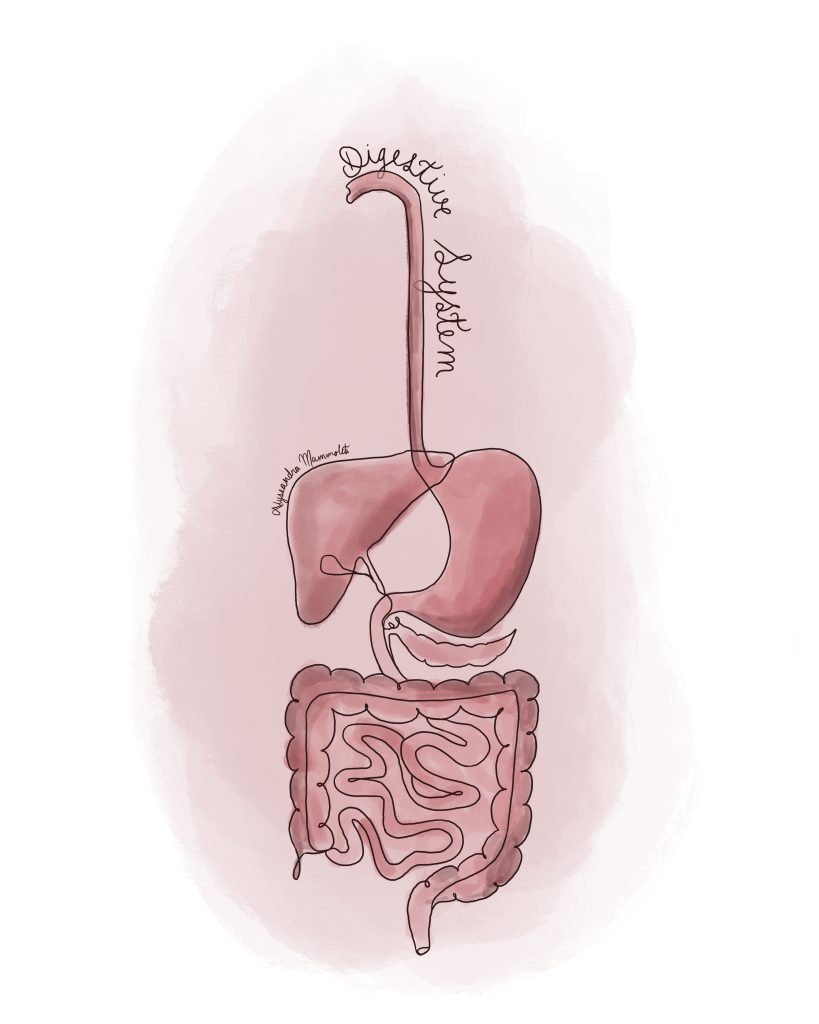Chapter 1: Digestive System

Imagine your favourite lunch. You savour each bite, relishing its flavours and textures as it melts in your mouth. The act of swallowing transitions to a feeling of satisfaction. Yet digestion does not stop at the mouth. In humans, there is an entire digestive system which breaks down food, extracts its nutrients and produces feces which is excreted. This chapter will outline the basic introduction to each organ, significant structural aspects, notable functions and overall location with respect to anatomy.
This chapter will follow the overall path of food through the body otherwise referred to as the alimentary canal, which spans from the mouth to the anus and each organ in between. However, this chapter will also introduce various accessory organs like the pancreas, liver and gallbladder which play important roles in assisting in digestion. Further, this chapter will outline the blood supply of the digestive system and various peritoneal folds – sheets of smooth tissue – which hold each organ in place.
For a more in depth analysis of the digestive system visit MF3 if you are McMaster medical student.
Learning Outcomes
By the end of this chapter you should:
- Identify the alimentary canal and its location with respect to the human anatomy
- Identify the structures of the mouth and throat
- Analyze the anatomy of the stomach and the relevant cells for digestion in the stomach
- Identify the duodenum and its purpose in digestion
- Identify each accessory organ and its role in digestion
- Locate the jejenum and ileum and their role in absorption
- Explain the segments of the large intestine, rectum and anal canal
- Understand the role of the mesentery in digestion
- Locate the relevant blood vessels in the digestive system

